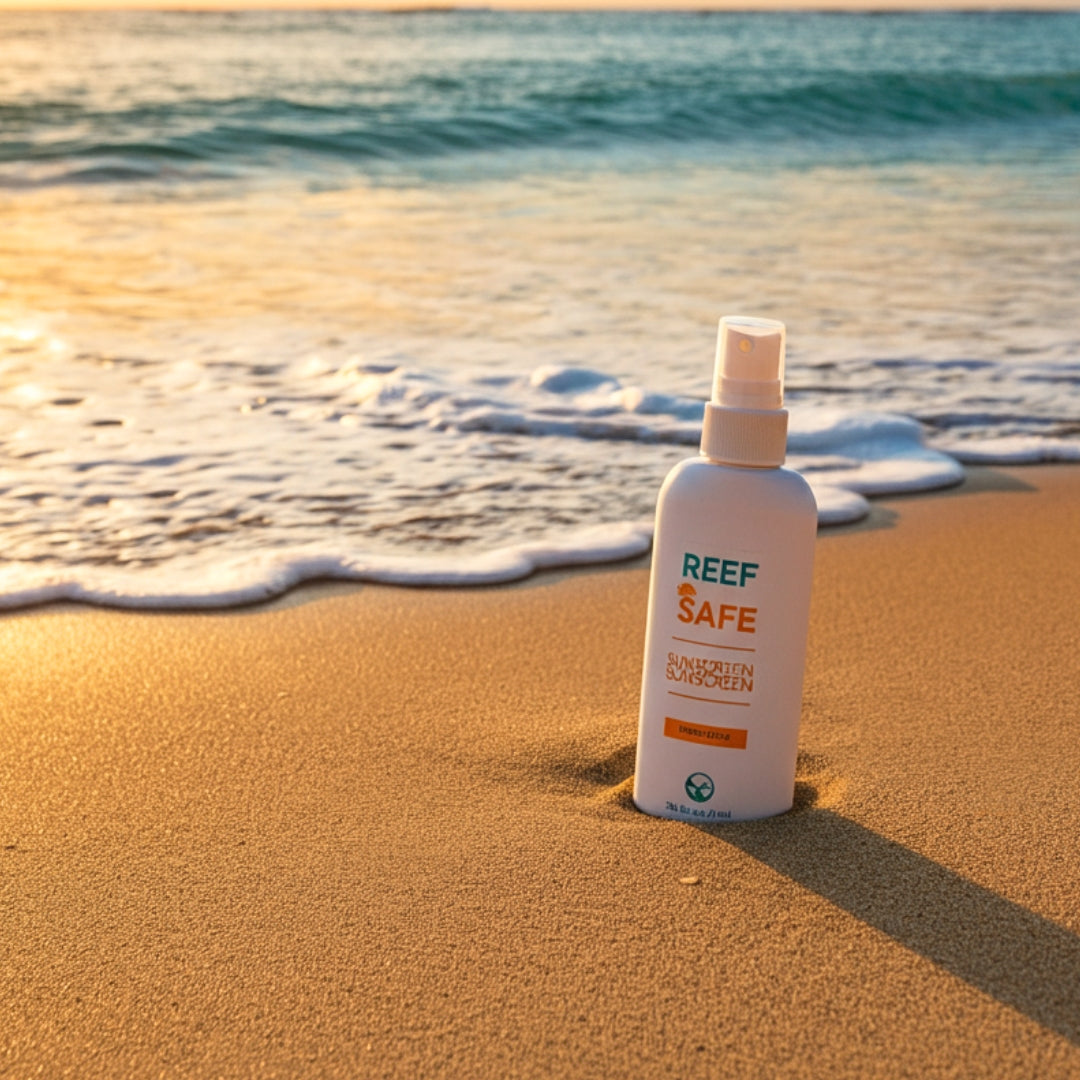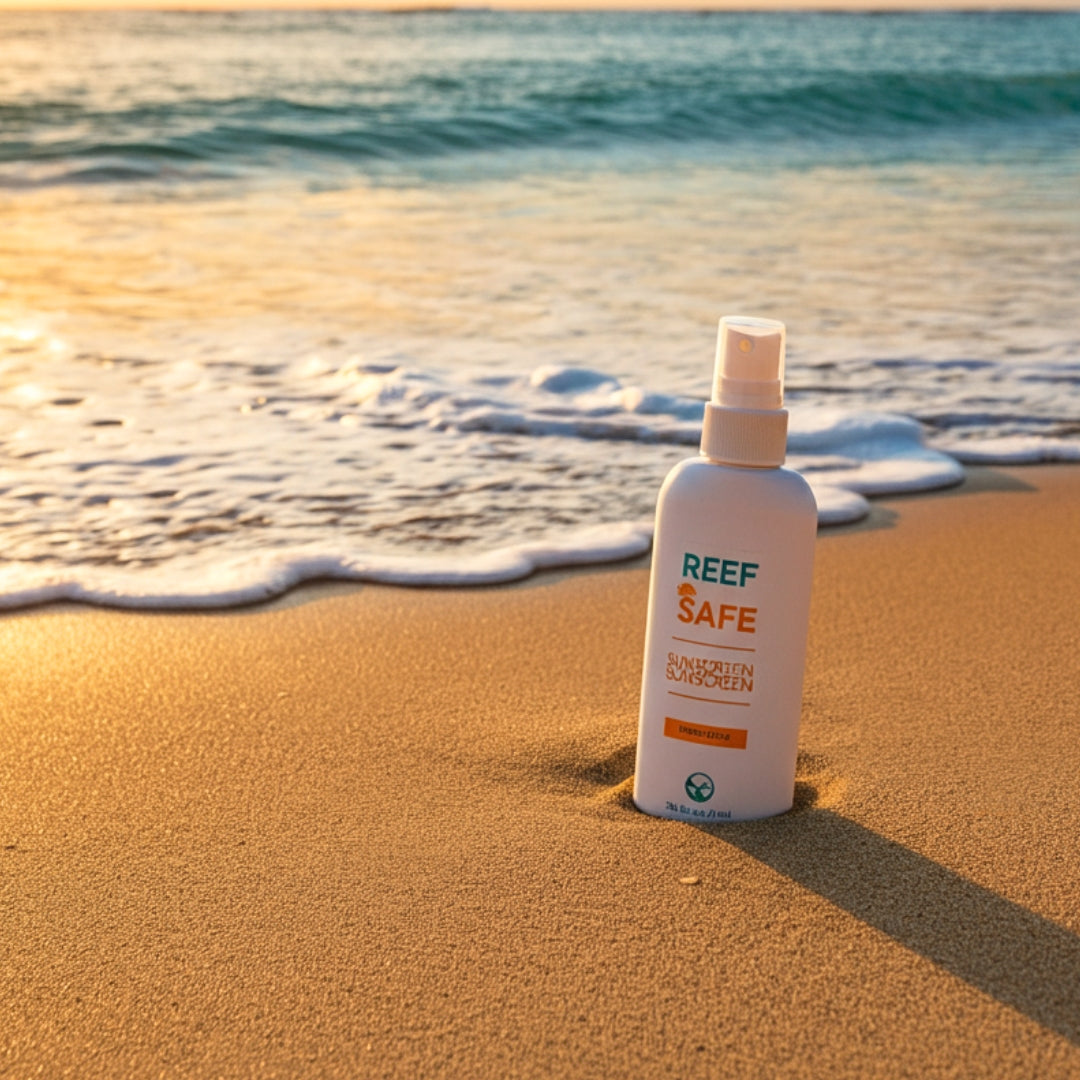A Guide to Reef-Safe Sunscreen: Protect Your Skin and the Ocean

When you head to the beach for a day of fun in the sun, chances are sunscreen is high on your list of must-haves. While sunscreen is essential for protecting your skin, did you know that your choice of sunscreen can also have a huge impact on the health of our oceans? That’s where reef-safe sunscreen comes in.
Switching to reef-safe sunscreen isn’t just a small lifestyle change; it’s a meaningful step toward protecting the planet. Let's explore what it is, why it matters, and how you can choose the best option for both you and the ocean.
What Is Reef-Safe Sunscreen?
Reef-safe sunscreen is specially formulated to protect your skin without harming marine ecosystems, particularly coral reefs. Unlike traditional sunscreens, these products avoid harmful chemicals that damage coral and other marine life.
The term “reef-safe” usually means the product doesn’t contain key harmful ingredients, such as oxybenzone and octinoxate, which have been linked to coral bleaching and other environmental issues. By using reef-safe options, you can enjoy sun protection guilt-free, knowing you’re not contributing to the destruction of underwater habitats.
Why Does Reef-Safe Sunscreen Matter?
Coral reefs are often called the “rainforests of the sea” because they support such incredible biodiversity. From providing shelter for countless marine species to protecting coastal areas from storm surges, coral reefs are an essential part of the ocean’s ecosystem. But they’re also incredibly fragile.
Recent studies reveal that up to 14,000 tons of sunscreen end up in the ocean every year. Ingredients like oxybenzone and octinoxate disrupt the growth, reproduction, and health of coral. These chemicals cause coral bleaching, where reefs lose their vivid colors and, more tragically, begin to die. The damage affects not only the reefs themselves but also the countless marine species that call them home.
Reef-safe sunscreen is an easy way to enjoy your sunny adventures while ensuring coral reefs continue to thrive.
How to Choose Reef-Safe Sunscreen
With so many sunscreen options on the market, figuring out which ones are truly reef-safe can feel overwhelming. But don’t worry! Here are some simple steps to help you choose wisely:
1. Check the Ingredients
-
Avoid these harmful chemicals:
- Oxybenzone
- Octinoxate
- Octocrylene
- Homosalate
Instead, opt for sunscreens containing zinc oxide or titanium dioxide as their active ingredients. These mineral-based sunblocks physically deflect the sun’s rays and are much better for marine life.
2. Look for Reef-Safe Labels
Many brands now proudly display “reef-safe” or “ocean-friendly” labels on their packaging. While it’s always good to double-check ingredients, these labels can be a helpful guide.
3. Choose Non-Nano Formulas
When shopping for mineral sunscreens, pick products labeled as “non-nano.” This term ensures the particles are too large to be absorbed by coral or other marine organisms, making it a safer choice.
4. Avoid Aerosols
Spray sunscreens can leave behind harmful particles that easily settle into the sand and eventually wash into the ocean. Stick to lotion-based sunscreens for a more environmentally friendly option.
By making these small adjustments to your sun care routine, you’ll protect not only yourself but also the marine environments we all adore.
Tips for Applying Sunscreen Responsibly
Even the best reef-safe sunscreen can be less effective for ocean protection if applied carelessly. Here are a few key tips to maximize its benefits:
- Apply early: Put sunscreen on at least 15 minutes before heading into the water. This minimizes the amount that washes off immediately.
- Use eco-friendly clothing: When possible, supplement sunscreen with UV-protective clothing such as rash guards, hats, and cover-ups. Less sunscreen applied means less exposure to the ocean.
- Reapply conscientiously: After swimming or sweating, reapply a reef-safe sunscreen to ensure continued skin protection. However, take extra care to spread it evenly so none is wasted.
These small habits can help you enjoy your day in the sun while respecting marine ecosystems.
Join the Movement to Protect Coral Reefs
Switching to reef-safe sunscreen may seem like a small act, but it has a massive impact. By choosing products that protect both your skin and the ocean, you’re helping ensure vibrant coral reefs and thriving marine life for generations to come.
Check out these reef safe sunscreen options the team at Travel + Leisure have put together. Their article highlights the best reef-safe sunscreens, emphasizing their importance in protecting marine ecosystems while providing effective sun protection. It reviews and tests 32 options, focusing on factors like texture, water resistance, and eco-friendliness.
⎹ Our Ocean, Our Responsibility





Leave a comment